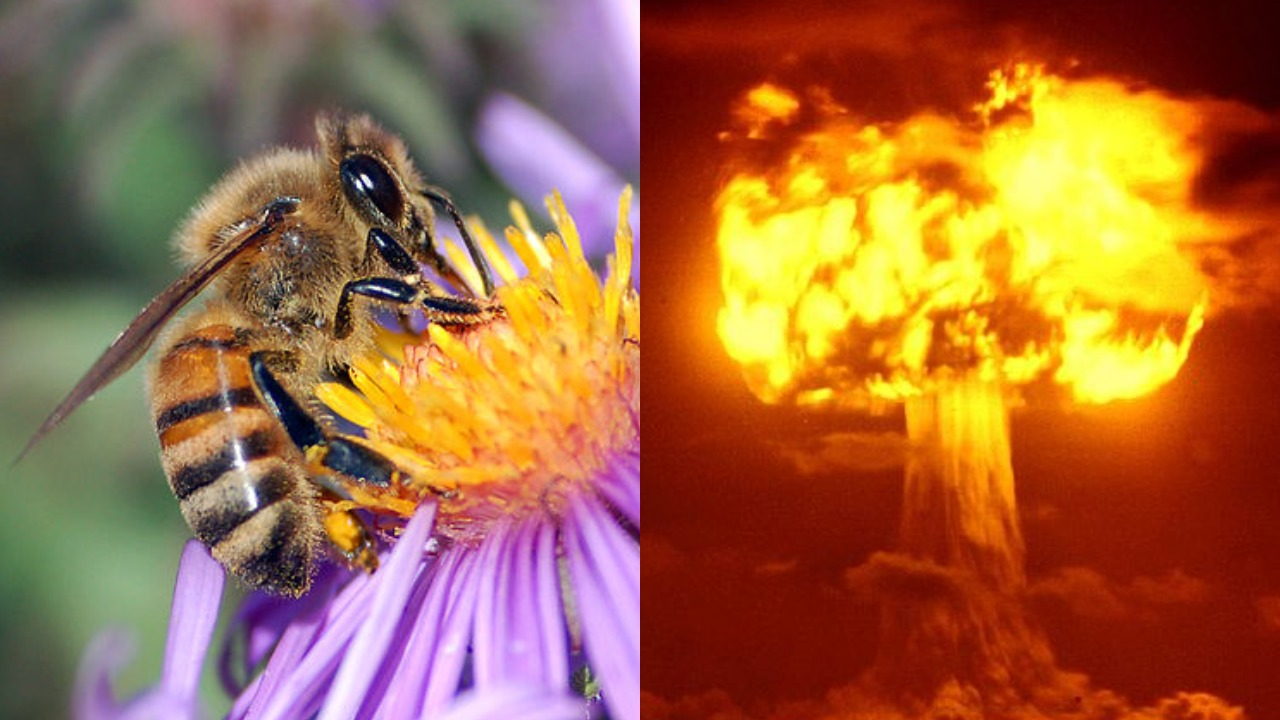Nuclear Fallout From The Cold War Might Be Killing Our Bees
It's no secret that humankind has been a massive dick to bees, even though they're responsible for the pollination and survival of 80% of the world's plants and are directly linked to more than one third of the world's food supply. You'd think we'd be more grateful, but we're not, because they have stingers and are always ruining our picnics. It's very hard to love something when it chases you around a park for hours while you try to eat a ham sandwich, but it's imperative we all try harder to love the bees, especially because we've been killing billions of them every year with pesticides, chemicals, and god knows what else. Over the past few decades, the world's bee population has been decreasing thanks to a phenomenon called colony collapse disorder; fingers have been pointed at the aforementioned pesticides, malnutrition, starvation, and a whole slew of other things, but science still does not have a definitive answer as to what is killing the bees. Now, according to a study published last month in the scientific journal Nature Communications, there's another potential culprit in the mix: Cesium-137.
What is Cesium-137, you ask? Well, it's an isotope produced when radioactive elements like uranium and plutonium become bombarded by neutrons, which split apart their unstable atoms and releases an absolute ungodly amount of energy. In other words: it's a radioactive byproduct of atomic bombs. Though the atomic bomb has only been used as a weapon twice, during the Cold War more than 2,000 were detonated in military technology tests around the world. Though most of these tests were conducted in New Mexico and Russia, lots of that sweet, radioactive cesium-137 got into the stratosphere where it was blown eastward, ended up in rain clouds, then came pouring down on the east coast of the U.S., where it was greedily sucked up by plants, which transformed it into nectar. Since nectar makes up 100% of bees' food supply, they've been feasting on cesium-137 for decades and have been passing trace amounts into their honey. Of the 122 honey samples gathered from hives up and down the East Coast, cesium-137 was found in 68 of them.
Before you run frantically into the kitchen to grab all your honey and bury it deep underground, Jim Kaste, an associate professor at the College of William & Mary and one of the study's co-authors, said in a statement that the levels of cesium-137 he's found in honey are not high enough for humans to start freaking out about. Bees, however, should totally be freaking out, and they have every right to.
"What we see today is a small fraction of the radiation that was present during the 1960s and 1970s," said Keste. "And we can't say for sure if cesium-137 has anything to do with bee colony collapse or the decline of population."
So when will cesium-137 stop being a threat to our precious bees? It's going to be a while, as the radioactive isotope has a half-life of 30 years, meaning it will take decades to disappear completely. The good news, though, is that all those displays of atomic power totally showed Russia who's boss... right?
